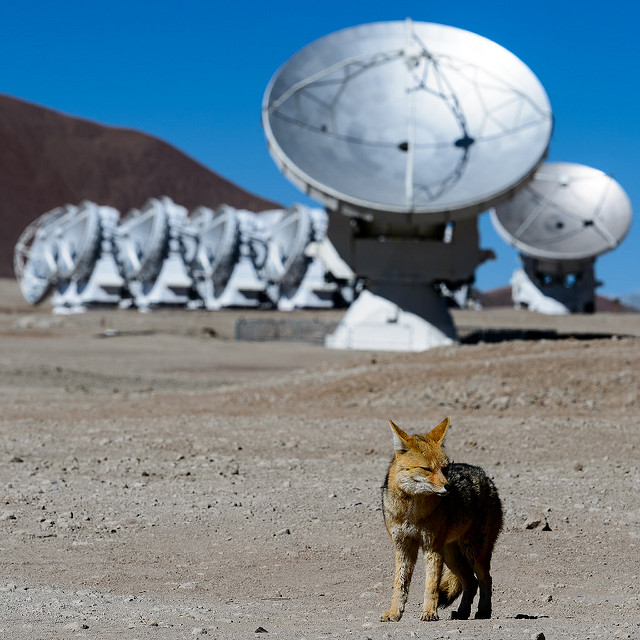Posted by Dan Richman, Program Assistant for the Community Engagement Fellows Program.

The American Chemical Society (ACS) International Center, a neighbor of AAAS here in Washington, DC, provides resources that help scientists in all fields prepare for the challenges of global scientific collaboration. For those who aren’t in town, they also offer their lectures as webinars. Back in June, I reported on a webinar that offered practical advice for working with globally distributed and multicultural teams.
As the District cooled off in late September, I visited the ACS headquarters in person to hear Dr. Rebecca Spyke Keiser, Head of the Office of International Science and Engineering of the National Science Foundation (NSF), give a talk titled “International Collaboration at NSF: Expanding the Frontiers of Research and Creating a Globally Engaged Workforce”. In this post I report back with some highlights from that talk.
What’s the purpose of the NSF Office of International Science and Engineering?
The NSF recognizes that scientists in the United States often work closely with scientists in other nations. At the same time, science and engineering are matters of national interest because they affect economies, security, and health. NSF uses its Office of International Science and Engineering (OISE) to serve the NSF’s research priorities by fostering an international strategy of collaboration, rather than competition. In brief, OISE exists because, as Dr. Keiser puts it, potentially transformative science and engineering are not limited to US borders or US facilities.
Dr. Keiser’s challenge is to look for high quality research around the world, and she emphasized that this task does not end with maintaining contacts among established allies and technologically developed nations. OISE makes an effort to find projects in nations that are building science and engineering capacities, which many people in the US may not have been aware of. The OISE also works on increasing the global engagement of US scientists, creating opportunities for students, and reducing barriers for US students to work abroad.
In her talk and the following Q&A session, Dr. Keiser explained how OISE performs these functions, addressing several key themes.
OISE “has the Rolodex”
With a budget of $50 million within the NSF’s total of $8 billon, the OISE helps other NSF directorates succeed internationally, rather than funding much research itself. One example of this is LIGO-India, a program of the Directorate of Mathematical and Physical Sciences. In Dr. Keiser’s words, OISE “has the Rolodex” of contacts, giving them the right connections to make exciting projects possible.
Dr. Keiser emphasized that collaboration is generated from the bottom up. The NSF is in fact working on new ways to measure collaborations to figure out where ideas come from and who collaborates with whom. An empirical approach avoids the trouble of trying to dictate projects from the top down and needing to reconcile the different priorities of governments around the world.
Dr. Keiser illustrated OISE’s investment in researchers by describing the International Research Experience for Students program. The program supports a cohort of undergraduate and graduate students working with a US Principal Investigator and partners in other countries. For example, the program includes a collaboration around water quality in post-earthquake Nepal.
The choreographers of collaboration
Performing research with international teams makes the perennial challenges of grants and funding cycles even more acute. Schedules and deadlines for budget review differ around the world. Because it’s hard to collaborate if you don’t know how much money you’re working with, or when it’s coming in, OISE tries to synchronize review processes.
The NSF rarely funds the members of a project who are outside the US, and this can be a problem if those partners work in an emerging economy. One of OISE’s approaches in such a situation is to coordinate funding of the US side through NSF and the international side by USAID.
In addition to facilitating specific collaborations, OISE helps develop the norms and practices of research around the world. Dr. Keiser noted that perspectives on merit review differ and that many countries don’t have or are just starting a merit review system. Involvement with international bodies such as the Global Research Forum and OECD Global Science Forum is an important way for OISE to promote the systems that make US science successful, including our merit review practices.
OISE looks to the strengths of other nations
In response to a question about how China and Russia are included in international collaborations, Dr. Keiser noted that OISE’s Beijing office has built ties based on local strengths in paleontology and genetic diversity research. In the case of Russia, she mentioned strong partnerships around chemistry and materials science.
Dr. Keiser reminded the audience that the best science doesn’t necessarily come from the most technologically advanced nations. She noted the importance of a recent workshop in Senegal. The workshop helped build relationships among researchers studying the interdependence of food, water, and energy issues.
Interested in careers managing international collaboration?
Dr. Keiser encouraged people interested in facilitating international collaborations to be open to a wide variety of training and career paths. She recommended trying to get involved through internships, pointing out that Washington, DC, is home to many organizations focused on international science, including the NSF, American Chemical Society, American Physical Society, and AAAS.
Policy and science are interrelated but different, Dr. Keiser said. Her advice is to develop expertise about policy, even in areas outside of science. Writing and communication, she said, are the two most important skills to develop. She also said that anyone planning to do this sort of work should enjoy building relationships.
The way Dr. Keiser described the role of facilitating international collaborations sounds a lot like scientific community management. In fact, we expect several of our Community Engagement Fellows and host organizations to be involved in exactly that. Gaining experience in community management, scientific project or program management, or internal communications could be a great first step toward a career in international collaborations.